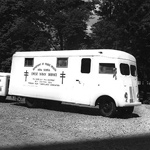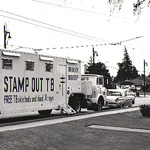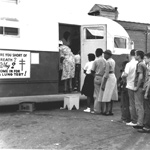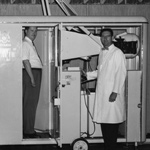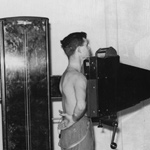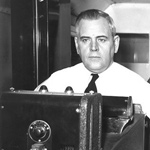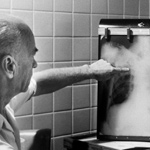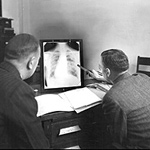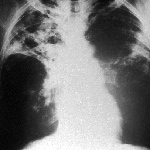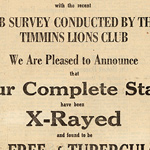x-ray surveys
X-Rays were first studied by Wilhelm Röntgen in 1895. He was the first to show that they could have medical use, after he created an x-ray image of his wife’s hand. Their use in diagnosing multiple internal ailments, including tuberculosis, was quickly realized by many doctors. Used most often in conjunction with tuberculin skin tests, x-rays are able to reveal masses and scarring in the lung indicating a strong likelihood of active TB infection.
Provincial Lung Associations created mobile units in vans and trucks to bring x-ray and fluoroscope technologies to communities in the early-mid twentieth century. Travelling diagnostic clinics were established in Nova Scotia in 1920 that relied on both skin tests and x-rays. When, in 1921, skin tests in Saskatchewan showed high levels of infection but could not identify active cases, positive skin test results were followed up with x-rays. By enabling diagnosis of the disease in people who might have no idea they were infected, such x-ray units helped to prevent the spread of disease.
After World War II new x-ray technologies, techniques, and film materials made x-rays cheaper and more portable. As they became more accessible, provinces began to adopt the vision of screening whole communities rather than select individuals. Saskatchewan led the way in this regard, completing an x-ray survey of all cities, towns, villages and municipalities in 1947. In 1945 Ontario adopted the whole community approach, while Manitoba followed suit in 1948. Kingston underwent surveys in 1947, 1951, and 1955. This method was found to be inefficient, and a misuse of resources, though, since the incidence rate of tuberculosis was declining rapidly. Soon the public health system returned to targeting at risk populations for screenings.
The risks of x-rays were not fully understood during the time of these mass screenings. Protective lead covers were not used by doctors or nurses until the 1950s. Many of the doctors and nurses involved in these screening later developed health problems, such as cancer.
Chest radiography continues to be used to screen immigrants to Canada for latent and active TB infection.
Explore the picture gallery to learn more about this preventative measure.
